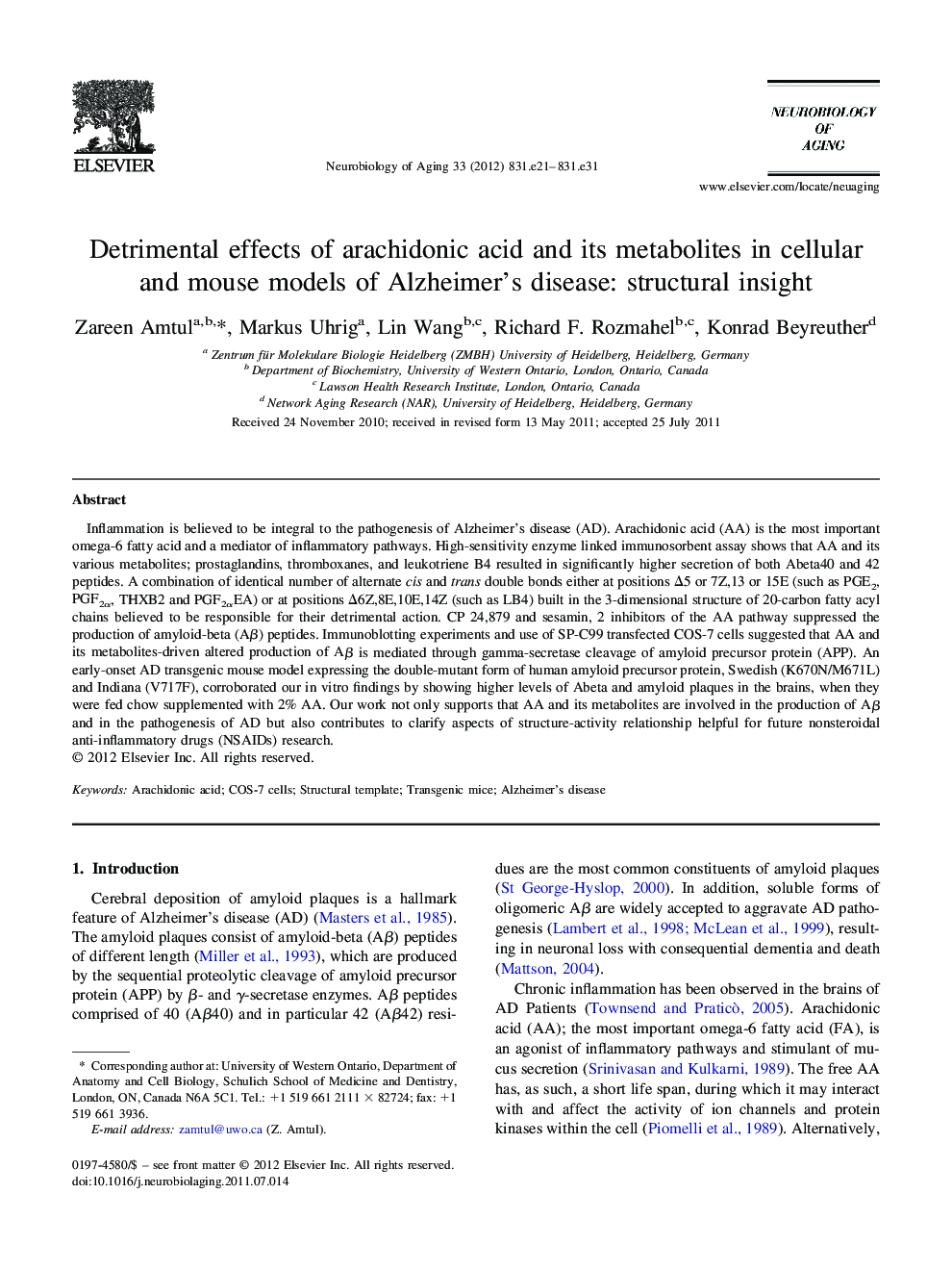| Article ID | Journal | Published Year | Pages | File Type |
|---|---|---|---|---|
| 6809521 | Neurobiology of Aging | 2012 | 11 Pages |
Abstract
Inflammation is believed to be integral to the pathogenesis of Alzheimer's disease (AD). Arachidonic acid (AA) is the most important omega-6 fatty acid and a mediator of inflammatory pathways. High-sensitivity enzyme linked immunosorbent assay shows that AA and its various metabolites; prostaglandins, thromboxanes, and leukotriene B4 resulted in significantly higher secretion of both Abeta40 and 42 peptides. A combination of identical number of alternate cis and trans double bonds either at positions Î5 or 7Z,13 or 15E (such as PGE2, PGF2α, THXB2 and PGF2αEA) or at positions Î6Z,8E,10E,14Z (such as LB4) built in the 3-dimensional structure of 20-carbon fatty acyl chains believed to be responsible for their detrimental action. CP 24,879 and sesamin, 2 inhibitors of the AA pathway suppressed the production of amyloid-beta (Aβ) peptides. Immunoblotting experiments and use of SP-C99 transfected COS-7 cells suggested that AA and its metabolites-driven altered production of Aβ is mediated through gamma-secretase cleavage of amyloid precursor protein (APP). An early-onset AD transgenic mouse model expressing the double-mutant form of human amyloid precursor protein, Swedish (K670N/M671L) and Indiana (V717F), corroborated our in vitro findings by showing higher levels of Abeta and amyloid plaques in the brains, when they were fed chow supplemented with 2% AA. Our work not only supports that AA and its metabolites are involved in the production of Aβ and in the pathogenesis of AD but also contributes to clarify aspects of structure-activity relationship helpful for future nonsteroidal anti-inflammatory drugs (NSAIDs) research.
Related Topics
Life Sciences
Biochemistry, Genetics and Molecular Biology
Ageing
Authors
Zareen Amtul, Markus Uhrig, Lin Wang, Richard F. Rozmahel, Konrad Beyreuther,
